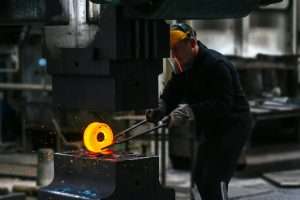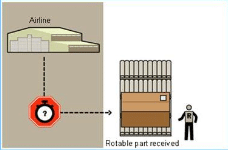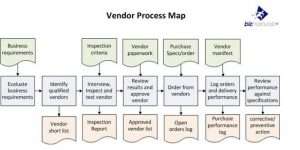Creating Effective Standard Operating Procedures for Manufacturing

In the world of manufacturing, standard operating procedures (SOPs) play a crucial role in ensuring the efficiency and quality of processes. An SOP is a set of instructions that outlines the steps necessary to execute a particular task or process. These procedures serve as a reference for employees, helping to maintain consistency in work methods and minimizing the risk of errors or waste. In this article, we will examine the importance of creating an effective SOP for manufacturing and discuss the key components of an effective SOP.
The Importance of Standard Operating Procedures in Manufacturing
The ultimate goal of a manufacturing operation is to reduce costs and increase efficiency by producing high-quality products at a consistent rate. In order to achieve this, manufacturers must rely on a set of standardized processes that are repeatable and reliable. The use of SOPs is critical in achieving this goal as they help to ensure consistency in work methods and output quality, making it easier to detect and solve problems as they arise.
Ensuring Consistency and Quality
A well-designed SOP outlines the steps necessary to complete a task or process in a consistent manner. By following these procedures, employees can achieve the desired output quality consistently, regardless of individual skill levels or experience.
This is because the SOP provides guidance on the desired outcome and the required steps to achieve it. This not only ensures consistent quality but also reduces the number of mistakes or defects that may otherwise occur.
For example, imagine a manufacturing operation that produces electronic components. The SOP for assembling a circuit board might include specific instructions on how to place each component, how much solder to use, and how long to apply heat. By following these instructions, employees can ensure that each circuit board is assembled correctly and to the same high standard, regardless of who is doing the assembly.
Reducing Errors and Waste
Errors and waste can be costly and detrimental to the success of a manufacturing operation. An effective SOP can reduce the occurrence of these issues by outlining the steps necessary to complete a task or process in a consistent manner. This consistency ensures that the desired output quality is achieved while reducing the likelihood of errors that can lead to waste.
For example, in the same electronic component manufacturing operation, an SOP for quality control might include specific instructions on how to test each circuit board for defects. By following these instructions, employees can quickly identify and correct any defects before the circuit board is shipped to the customer. This not only ensures that the customer receives a high-quality product but also reduces the amount of waste generated by defective products.
Streamlining Training and Onboarding
An SOP can serve as a valuable resource for training new employees and streamlining the onboarding process. The use of an SOP ensures that all employees are trained on the same procedures, reducing the time and effort required to bring new hires up to speed. This also helps to maintain consistency in output quality as all employees are trained on the same processes.
For example, imagine a new employee joining the same electronic component manufacturing operation. By providing them with the relevant SOPs, the employee can quickly learn the required procedures and start contributing to the production process. This not only saves time and effort but also ensures that the new employee is trained to the same high standard as existing employees.
In conclusion, the use of standard operating procedures is critical in achieving consistent quality, reducing errors and waste, and streamlining training and onboarding in manufacturing operations. By following these procedures, manufacturers can achieve their ultimate goal of reducing costs and increasing efficiency while producing high-quality products.
Key Components of an Effective Standard Operating Procedure
Standard Operating Procedures (SOPs) are vital to the success of any organization. They provide employees with clear instructions on how to complete tasks or processes, ensuring consistency in output quality and reducing the likelihood of errors or waste. An effective SOP should contain the following key components:
Clear and Concise Objectives
The objectives of the SOP should be clearly defined and stated at the beginning of the document. This ensures that the purpose of the SOP is understood by all employees and that they are aware of what is expected of them while following the SOP. The objectives should be specific, measurable, achievable, relevant, and time-bound (SMART).
For instance, if the objective of the SOP is to ensure the safety of employees while operating heavy machinery, the SOP should clearly state the safety measures that need to be taken, such as the use of PPE, and the roles and responsibilities of those involved in the process.
Step-by-Step Instructions
The SOP should provide step-by-step instructions on how to complete a task or process. These instructions should be clear, concise, and easy to understand. They should also be presented in a logical sequence to ensure that the process is completed correctly.
For example, if the SOP is for the assembly of a product, the instructions should start with the preparation of the work area, followed by the identification of the components, and then the assembly process. The instructions should also include any quality checks or inspections that need to be carried out during the process.
Visual Aids and Diagrams
Visual aids and diagrams can be used to complement written instructions in the SOP. These help to make the SOP more user-friendly and can improve the understanding of complex procedures. They can also help to reduce the time taken to train new employees.
For instance, if the SOP is for the operation of a complex machine, a diagram can be included to show the various parts of the machine and how they work together. This can help employees to understand the process better and reduce the likelihood of errors.
Safety and Compliance Considerations
An effective SOP should take into account safety and compliance considerations. This can include the use of personal protective equipment (PPE) or specific procedures designed to comply with regulatory requirements.
For example, if the SOP is for the handling of hazardous chemicals, the SOP should clearly state the safety measures that need to be taken, such as the use of PPE, the handling and storage procedures, and the emergency response procedures in case of spills or accidents.
Roles and Responsibilities
The SOP should define the roles and responsibilities of those involved in the process. This ensures that everyone is aware of their responsibilities and helps to maintain consistency in work methods.
For instance, if the SOP is for the production of a product, the roles and responsibilities of each employee involved in the process should be clearly defined. This can include the person responsible for quality control, the person responsible for packaging, and the person responsible for shipping.
In conclusion, an effective SOP is essential for the success of any organization. It ensures consistency in output quality, reduces the likelihood of errors or waste, and provides employees with clear instructions on how to complete tasks or processes. By including clear and concise objectives, step-by-step instructions, visual aids and diagrams, safety and compliance considerations, and roles and responsibilities, organizations can create SOPs that are user-friendly and effective.
Developing and Implementing a Standard Operating Procedure
The process of developing and implementing a standard operating procedure (SOP) is crucial for ensuring consistency and efficiency in workplace processes. A well-written and properly executed SOP can help to reduce errors, improve productivity, and ensure compliance with regulations and standards.
Identifying and Analyzing Processes
The first step in developing an SOP is to identify and analyze the processes that require standardization. This can be done by observing current practices and identifying areas where consistency can be improved. It is important to involve key stakeholders in this process to ensure that all relevant processes are identified and analyzed.
Once the processes have been identified, it is important to analyze them in detail. This involves breaking down each process into its constituent parts and identifying any potential areas for improvement. This analysis should take into account any relevant regulations or standards that apply to the process.
Collaborating with Key Stakeholders
Collaboration with key stakeholders is essential for the success of an SOP. This includes supervisors, managers, and employees who are involved in the process. By involving these stakeholders, you can ensure that the SOP takes into account the knowledge and experience of those involved in the process.
Stakeholders should be involved in the development of the SOP from the beginning. This includes identifying and analyzing processes, as well as writing and reviewing the procedure. By involving stakeholders in the development process, you can ensure that the SOP is relevant, accurate, and effective.
Writing and Reviewing the Procedure
The SOP should be written in a clear and concise manner, using plain language that is easily understood by all employees. It should include all relevant information, such as step-by-step instructions, safety considerations, and compliance requirements.
Once the SOP has been written, it should be reviewed by key stakeholders to ensure that it accurately reflects the desired process. This review process should include feedback from employees who will be directly impacted by the SOP.
Training and Communicating the Procedure
Once the SOP has been developed and reviewed, it is important to communicate it to all employees involved in the process. This should include training on the procedures outlined in the SOP, as well as any associated safety and compliance considerations.
Training should be conducted in a clear and concise manner, using examples and demonstrations to help employees understand the procedures outlined in the SOP. This training should be ongoing, with regular updates and refresher courses provided as necessary.
Monitoring and Updating the Procedure
The SOP should be regularly monitored and updated to ensure that it remains relevant and accurate. This can be done by soliciting feedback from employees and stakeholders and incorporating changes as necessary.
Monitoring the SOP can help to identify any areas where improvements can be made. This feedback should be used to update the SOP and improve the overall process. By regularly monitoring and updating the SOP, you can ensure that it remains effective and relevant over time.
Standard Operating Procedures for Manufacturing
An effective standard operating procedure is critical in ensuring the efficiency and quality of processes in manufacturing as well as aiding in continuous improvement in manufacturing. By following the steps outlined in this article, manufacturers can create an SOP that is clear, well-defined, and consistently followed. This not only helps to reduce errors and waste but also streamlines the onboarding process and ensures compliance with regulatory requirements.















Leave a Reply